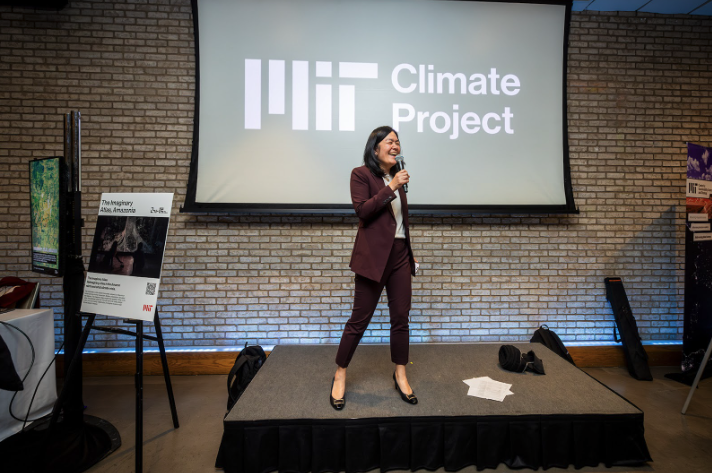Showcasing energy and climate solutions
The MIT Climate Project highlights MIT ideas and innovations at Climate Week NYC 2025.

Hundreds of industry and non-profit leaders, government representatives, investors, researchers, and experts recently gathered at an interactive MIT Innovation Showcase as part of Climate Week NYC, one of the largest global gatherings of the energy and climate community.
Hosted by the MIT Climate Project and held at the Dream Hotel Downtown in New York City’s Chelsea neighborhood on Wednesday, September 24, the event spotlighted cutting-edge projects from campus laboratories and technologies from MIT-affiliated startups focused on advances in clean energy, climate mitigation, and community resilience. More than 20 groups presented, offering an inside look at the transformative work emerging from MIT.
“We need early-stage discovery and practical, scalable solutions to meet energy and climate goals if we want to shape a better future,” says Evelyn Wang, MIT vice president for energy and climate. “The range of implementable ideas and technologies on display at the showcase provided inspiring examples of why I’m excited about the work currently happening — and continuing to grow and expand — at MIT.”
Climate Week NYC is a global climate event that brings together existing and new leaders from the world of business, tech, politics, academia, and civil society that have the means, the scale, and the ideas to take bold action. This year, it was held from September 21 to September 28, and MIT had a strong presence — with several groups across campus hosting presentations, panel discussions, and collaboration opportunities.
The presenters at the MIT Climate Project’s Innovation Showcase featured hands-on demonstrations and sparked conversation on a range of social, economical, and technological topics. The Abdul Latif Jameel Poverty Action Lab (J-PAL) underscored how to drive policies that are scalable and equitable, while the Plasma Science & Fusion Center was able to delve into the technological advances driving plasma science.
MIT spin-outs also took center stage, showcasing novel technologies. Active Surfaces shared its “no roof left behind” mantra with lightweight, flexible modules that dramatically expand where photovoltaics can be installed, while Pascal presented cooling systems that use solid-state materials in order to boost energy efficiency and reduce emissions.
“It was inspiring to see the types of interactions and conversations that can unfold when you bring together creative minds focused on implementation and action,” says Shane Kosinski, Executive Director for the MIT Office of the Vice President for Energy and Climate. “MIT is a leader in the climate space, but we do not hold all the pieces to the puzzle. Deploying solutions will require collaborations with all the various stakeholders represented at this event, and we were thrilled to create an opportunity to allow these valuable connections to grow.”
Photo credit: Justin Coleman